The Agora of Modernism: A Tour Through Istanbul's 14 Passages
In Passages, Walter Benjamin analyzed the rising modernism of the 19th century and the relations between the new face of the city and its inhabitants.
These structures connecting two streets, which proliferated in Istanbul in the same years in line with the spirit of the period, were actually Turkey's first shopping centers. But they had warmer and more intimate environments than the shopping malls we know today.
1. The historic Çiçek Passage with its tables lined up under the majestic dome

Since the 1940s, it has been one of the most entertaining and colorful passages of Beyoğlu with its tables lined up under the magnificent dome in the center.
When the famous Naum Theater, a favorite of Sultan Abdülhamit and Abdülaziz, was damaged by the Beyoğlu fire in 1870, banker Hristaki Zografos Efendi bought it. In service since 1876, this historic building has a Parisian style architecture and houses 24 shops and 18 luxury apartments.
2. Host of the Small Stage in Beyoğlu: Atlas Passage
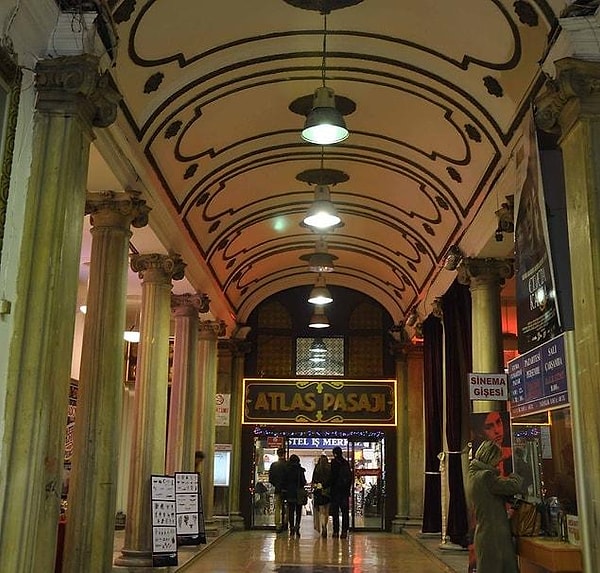
Another historical beauty on Istiklal Street is Atlas Passage. In 1877, it started to serve shortly after the construction of Çiçek Passage. Combined with the 3-story block behind it, it took its current form.
Atlas Passage, which has become a symbol of Istanbul since the 1930s, includes places such as Atlas Cinema, Mulen Ruj Gazinosu, Kulis Bar and Küçük Sahne.
3. Passage of firsts: Syria Passage
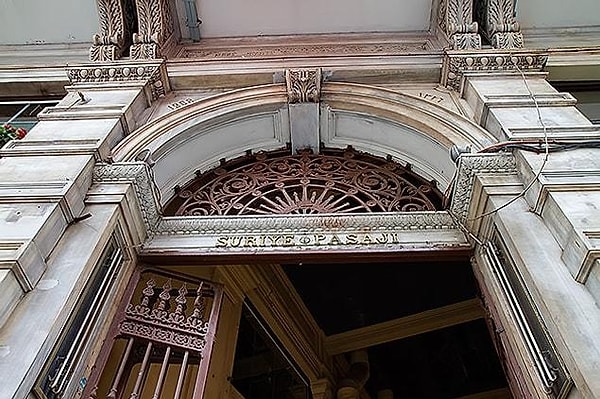
Turkey's first cinema, the Santral Cinema, opened in this passage, and the double elevator system was first used in this building. The passage was built in 1901 by Syrian national Hasan Halbuni Pasha and his relative Mehmet Abud Pasha, who was the president of the Istanbul Chamber of Commerce at the time. The building, which has a facade in neoclassical style, was designed by architect Demetre Th. Bassiladis designed the project. Completed in 1908, the passage was the first building designed as a bazaar on the lower floor and a residential building on the upper floors.
4. Also called the Tunnel Apartments: Tunnel Passage

Located directly opposite the Tunnel exit, the passage, also called Tünel Apartments, was built in neoclassical style.
The open top type passage with a T passage was built in 1883. The first owner of the passage connecting Sümbül Street to Asmalımescit was an Ottoman Jew. Two of the buildings were accessed from Ensiz Street and one from Sümbül Street, and Corinthian columns adorned the ground floor shops.
Since the 1960s, the facades of the three buildings in the passage have been restored and the passage has turned into a kind of inn. Especially in recent years, when Asmalımescit became more popular, this passage was rediscovered and beautiful cafes and restaurants were opened in the passage.
5. When this passage, a symbol of old Beyoğlu, gave its name to a pastry shop: Markiz Passage

This passage, a symbol of old Beyoğlu, opened in 1840 under the name Passage Oriental (Oriental Mirror Passage).
When Lebon, the famous patisserie of the period, was replaced by Markiz Patisserie in 1940, it unknowingly changed the fate of the passage. Over the years, Markiz became a giant with its delicious pastries and famous patrons; the passage, which was restored in 2003, took its name from this patisserie. Moreover, if not for Haldun Taner and his campaigns to save Markiz, this place would have almost become an auto spare parts store in the 1970s.
The famous Markiz in the arcade, which has always enlivened Beyoğlu with its five floors and 25 stores since its construction, has now been replaced by another food place. The 174-year-old passage is closed today.
**
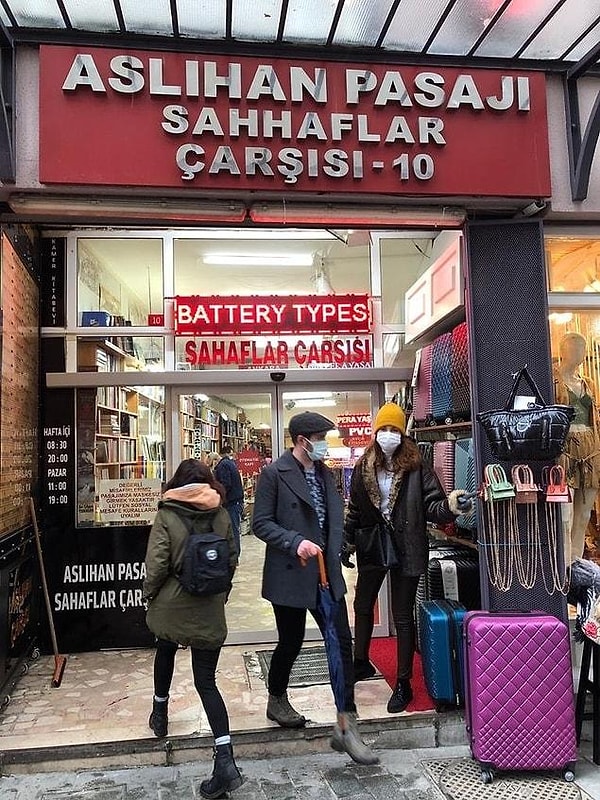
Aslıhan Passage is a two-story booksellers' passage located in the Balık Pazarı district of Beyoğlu, Istanbul. Located on Meşrutiyet Street, the bazaar consists of shops selling old books, magazines, comics and posters. Various auctions are also held in the passage.
In the area where the passage is located, there used to be the historic Krepen Passage, which was built on a narrow passage and housed taverns, shoemakers and barbers. It was home to places frequented by Edip Cansever, Cevat Çapan, Behçet Necatigil and Sait Faik.
7. One of the favorites of Istiklal Street: Aznavur Passage
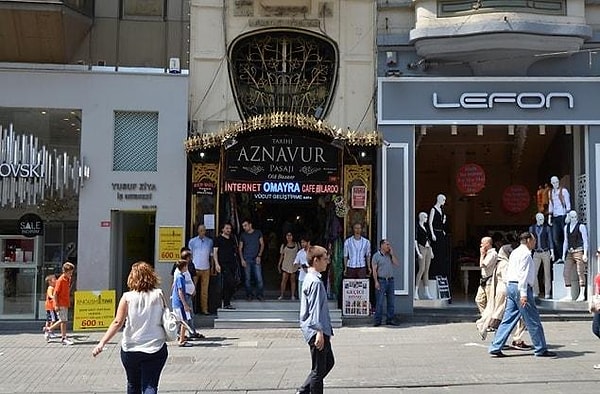
After the demolition of two famous cafes, Andrea's Cafe Commerce and Pandeli Kastranakis' Cafe de Pera in the late 1800s, Aznavur Passage slowly began to be built. Initially built as a half passage, Aznavur took its present form in 1924 when it was joined with a passage under the house where Aznavur lived in the Tepebaşı direction. The passage, which bears traces of the Italian architecture of the period, even housed the chemistry shop and laboratory of Alexander Vasiliyadis until the 1940s.
Aznavur Passage has 28 shops and many cafeterias. The passage, where there are various kinds of jewelry, second-hand clothes and original souvenirs on the ground floor, is one of the most popular places for tourists.
8. Milli Reasürans Passage: Connecting Abdi İpekçi and Teşvikiye streets
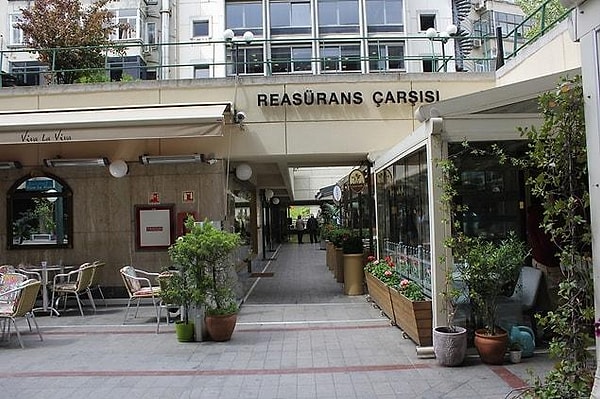
While the debate on whether it is a bazaar or a passage continues, most people consider it a modern passage. Milli Reasürans Passage connects Democracy Park and Teşvikiye.
During the day, boutiques and bookstores open their doors for guests, while in the evening, venues such as Zanzibar, Corridor, Touchdown, On and Kerem Görsev Jazz Bar turn it into a nightlife hotspot.
9. Hazzopulo Passage: Opens through a narrow door into a spacious courtyard

Nowadays, it is located at a point on Istiklal Street that provides access to the Danışman Passage through a narrow gate. Built in 1871 by the merchant Hacopulo, the passage used to have houses upstairs and shops downstairs. Ahmet Mithat Efendi's printing house was even located here, which is why it was also the meeting place of the Young Turks.
The five-story passage, which still retains its splendor today, has actually survived two major fires and two restorations. It is now an arcade of 40 shops, including bag shops, jewelry stores, bookstores, Hazzo Pulo Restaurant and Wine House.
10. Charlie Chaplin's famous Modern Times met the audience at the Alhambra Passage.
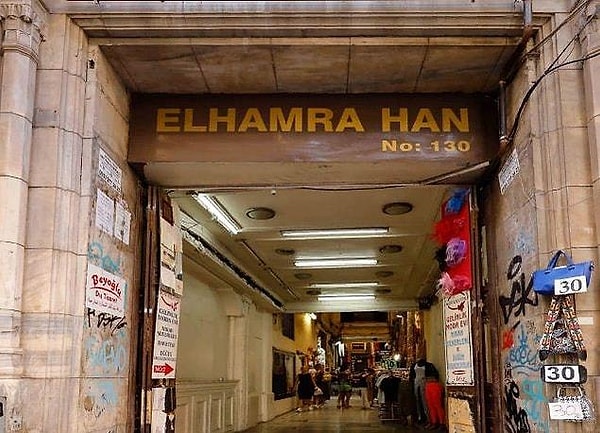
In 1827, Genoese Barthelemy Giustiniani first built a theater here. When the theater closed down later, the building was sold to Zade Sait Bey in 1920. Three years later, the Alhambra was rebuilt in the Ottoman Neoclassical style, and although it was not exactly a passageway, it was called a passage because of the wide corridor leading to the shops.
This place also had a surprise: The Alhambra Cinema. Charlie Chaplin's famous Modern Times and the first sound film of Turkish cinema, On the Streets of Istanbul, met the audience here for the first time.
11. Giraud D'Andria and Michel D'Andria, owners of the Terkos Passage, lived in one of the apartments here

Built by the D'Andria family in the 1880s, the passage originally housed Jorj Ruggieri's restaurant. In the same period, Giraud D'Andria and Michel D'Andria, the owners of the passage, lived in one of the apartments here. Georges Dassira, who arrived in 1924, and later Laszlo Boronkay operated the restaurant Çardaş here.
12. At a point connecting Galatasaray to the Fish Market: Avrupa Passage

The Jardin des Fleurs Theater had opened in 1861 on the site of this passage, which today connects Galatasaray and the Fish Market. When the theater was destroyed in the Beyoğlu fire of 1870, the owner of the land, Mr. Scribe, built today's famous Avrupa Passage.
Today, there are 22 shops in the marble-covered passage where button makers and belt makers used to be located. Two floors rise above each shop. On the upper facades of the shops facing the arcade, statues of women caress your eyes, while the roof of the passage is completely covered with glass. Since mirrors are placed between the shops, this place is also called Mirror Passage.
13. Although it says Halep Passage, cinema lovers know it as Beyoğlu cinema because of its cinema.
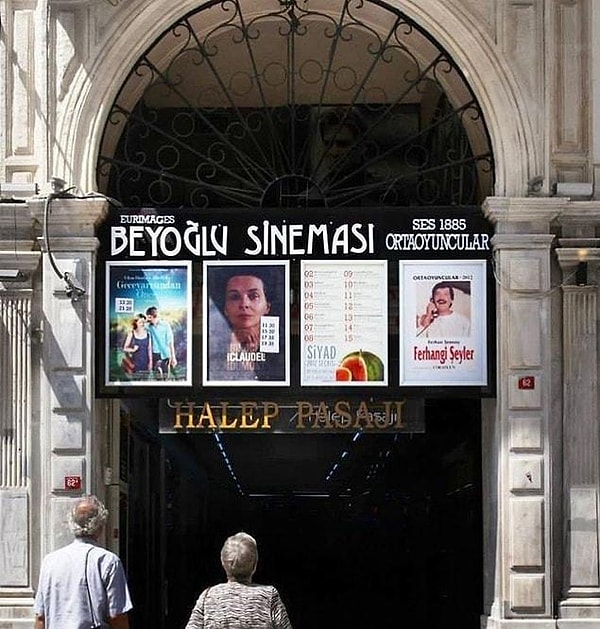
Built by M. Hacar from Aleppo in 1885, the passage is known as Halep (Aleppo) Passage because Hacar was from Aleppo. Today, it is also known as Beyoğlu Passage due to the Beyoğlu cinema on the ground floor. In 1885, the Pera Circus (Cirque de Pera) was established in the back of the building, which was made of wood and had access to and from the passage. After the 1904 fire, Architect Campanaki gives the circus area the shape of a theater building and the name Variety Theater is changed.
14. From Mansion to Passage: Beyoğlu Rumeli Passage
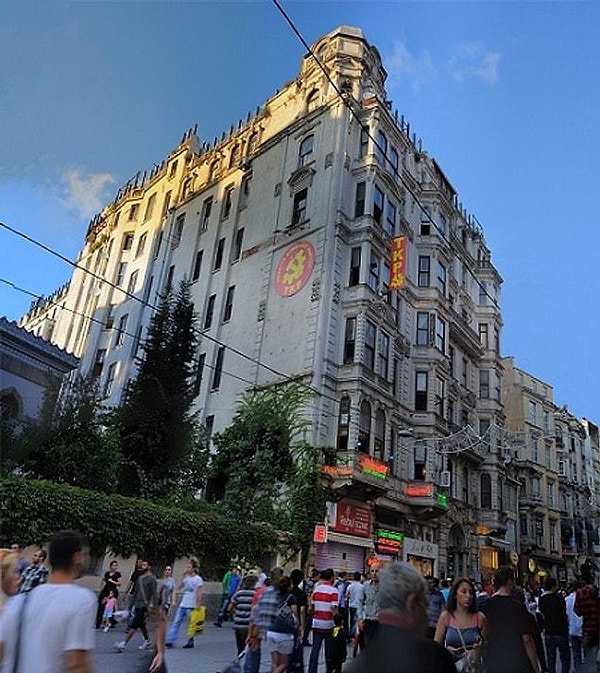
The Rumeli Passage, a narrow alley on the right as you walk towards Galatasaray on İstiklal, popularly known as the TKP building, was also among Ragıp Pasha's real estate investments. Pasha actually built this place as a mansion in 1894. When the mansion life came to an end, it turned into a workplace. The passage, which bears traces of Italian architecture, had two gates, one opening to İstiklal and the other to Öğüt and Mayacı streets.
Block C in the passage, which consists of three blocks, turned into an art workshop after its exterior and interior were repaired. At the entrance, past the stalls selling accessories, elevators welcomed you to the building, which was home to such venues as Oyuncular Tiyatro Kahve, Monalisa and Rumeli, where the actors were regulars. Unfortunately, this passage also had its share in the recent hotel boom in Beyoğlu and closed down.
Keşfet ile ziyaret ettiğin tüm kategorileri tek akışta gör!


Send Comment